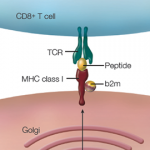 EULAR 2021—Rheumatologists and patients can reasonably ask: Is there a way to achieve sustained clinical remission in spondyloarthritis (SpA)? After all, a major goal of rheumatologic care is to return patients to the approximate levels of function and symptom-free existence they had prior to disease onset.
EULAR 2021—Rheumatologists and patients can reasonably ask: Is there a way to achieve sustained clinical remission in spondyloarthritis (SpA)? After all, a major goal of rheumatologic care is to return patients to the approximate levels of function and symptom-free existence they had prior to disease onset.
At EULAR 2021, Filip Van den Bosch, MD, head of clinic and associate professor of rheumatology in the Department of Rheumatology at Ghent University Hospital, Belgium, spoke on the topic of disease inactivity in patients with SpA. In the process, he imparted many clinical pearls regarding how to care for these patients.
Dr. Van den Bosch posed an interesting question at the start of the lecture: How does one define remission in a heterogeneous disease, such as SpA? One potential answer: Clinical remission or inactive disease is the absence of clinical and laboratory evidence of significant inflammatory disease activity. When looking at clinical trials, this definition would mean using the most stringent measures of disease inactivity as measured by outcomes scores, such as the Bath Ankylosing Spondylitis Disease Activity Index (BASDAI), the Ankylosing Spondylitis Disease Activity Score (ASDAS) and the Disease Activity in PSoriatic Arthritis score (DAPSA).
However, in SpA, clinical evaluation of disease goes beyond just looking at axial and peripheral arthritis. Rheumatologists must also take into account such domains as enthesitis, dactylitis, psoriasis, inflammatory bowel disease and uveitis.
Treatment
Over the past 20 years, dermatologists have succeeded in frequently achieving complete remission of skin psoriasis in patients treated with biologics, such as those targeting the interleukin (IL) 12, IL-17 and IL-23 pathways, said Dr. Van den Bosch. However, in rheumatology, advances in biologic treatments have not shown the same degree of near complete success. This result may, in part, reflect the fact that the resolution of skin disease is a clear and consistent outcome that can be measured across patients. But evaluating disease activity in a multi-dimensional disease, such as SpA, is more challenging.
Part of the challenge may be the characteristics of patients enrolled in clinical trials and how these traits have changed over time. Vandendorpe et al. examined patient characteristics in 12 phase 2 and phase 3 trials conducted on the subject of psoriatic arthritis (PsA) in the era of biologic therapy. This study found several objective measures, such as average swollen and tender joint count and C-reactive protein levels, have decreased in study patient populations in recent years, whereas more subjective measures, such as patient assessment of pain and disease activity and Health Assessment Questionnaire-Disability Index (HAQ-DI) scores, have increased over time.1 Such changes in study populations may make it challenging to compare outcomes of patients in the present day to those of patients evaluated in studies 10 or 20 years ago.
